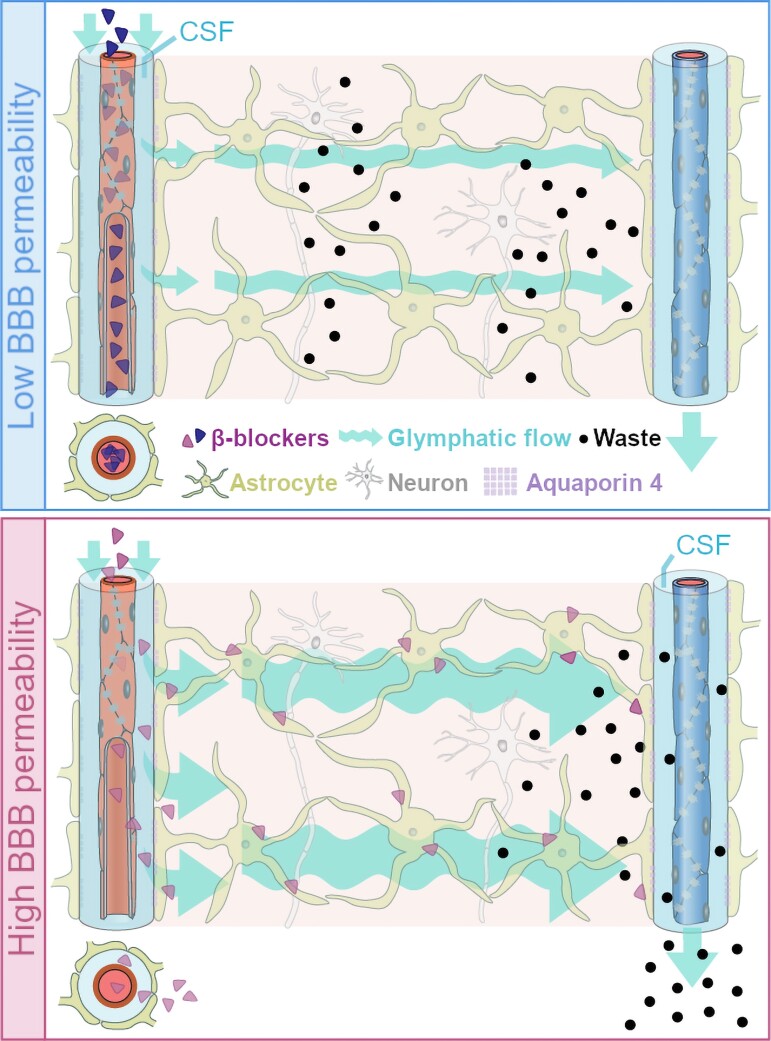Figure 1.
BBB permeable βBs may reduce the risk of Alzheimer’s disease. Proposed model: βBs increase CSF-dependent brain clearance of soluble neurotoxic proteins, including amyloid-β and tau, which are prominent in Alzheimer's disease pathology.8,22 CSF enters via the periarterial space, facilitated by aquaporin 4 (AQP4) water channels on surrounding astrocytic endfeet and driven by cardio-respiratory pulsations.7 As CSF is propelled into the parenchyma it mixes with solute-laden interstitial fluid. Convective bulk flow carries both towards the perivenous spaces, where fluid drains into meningeal or cervical lymphatic vessels10 (efflux along cranial and spinal nerves not illustrated here). βBs that cross the BBB (pink) may reduce Alzheimer's risk compared to those that do not cross (blue) by binding to astrocytes and decreasing their cell volume, thereby lowering resistance to bulk flow and promoting convection of waste products from the brain's interstitium to the periphery.20

